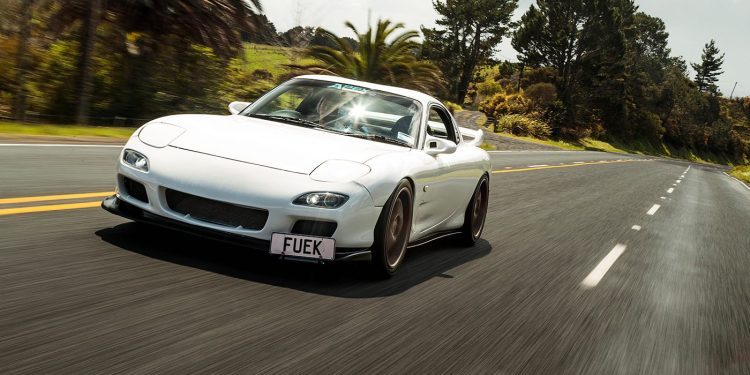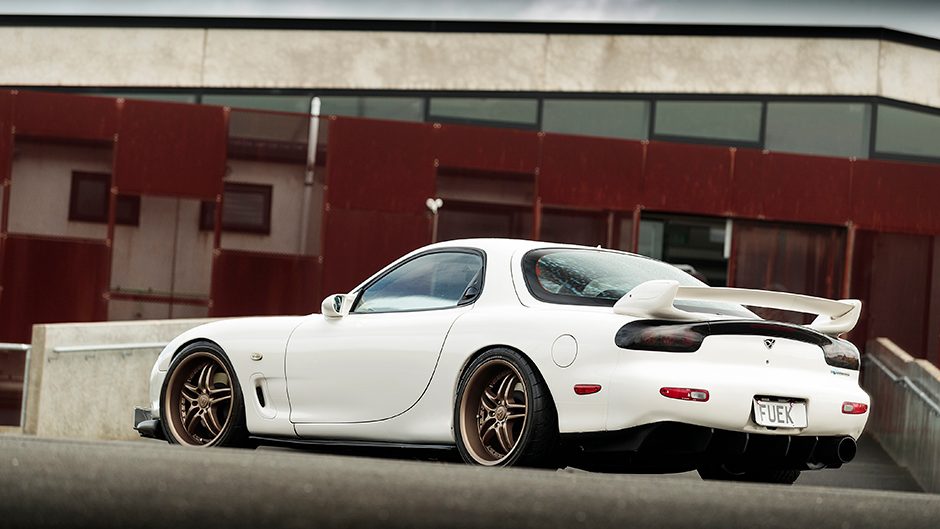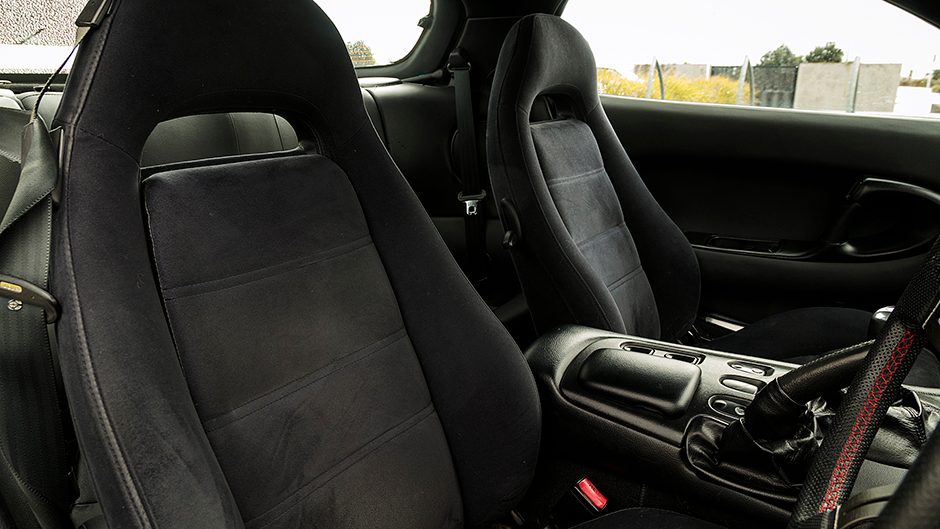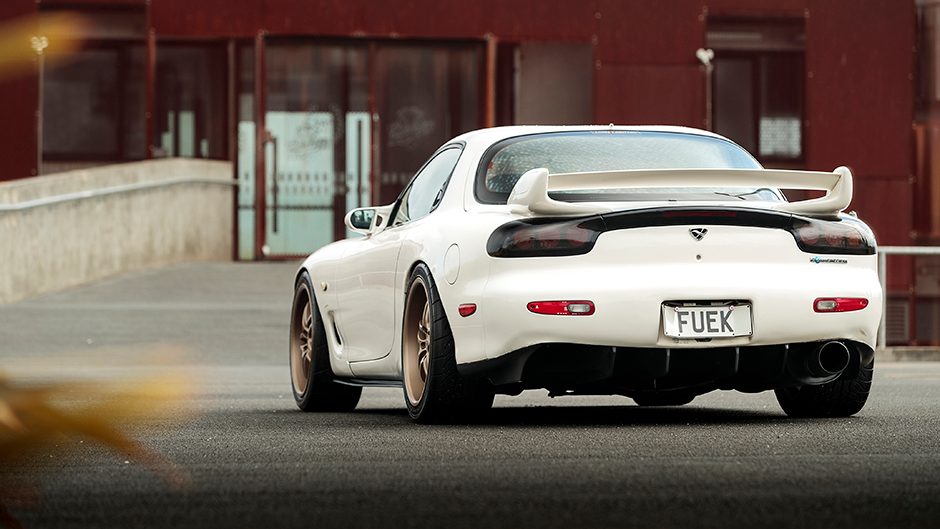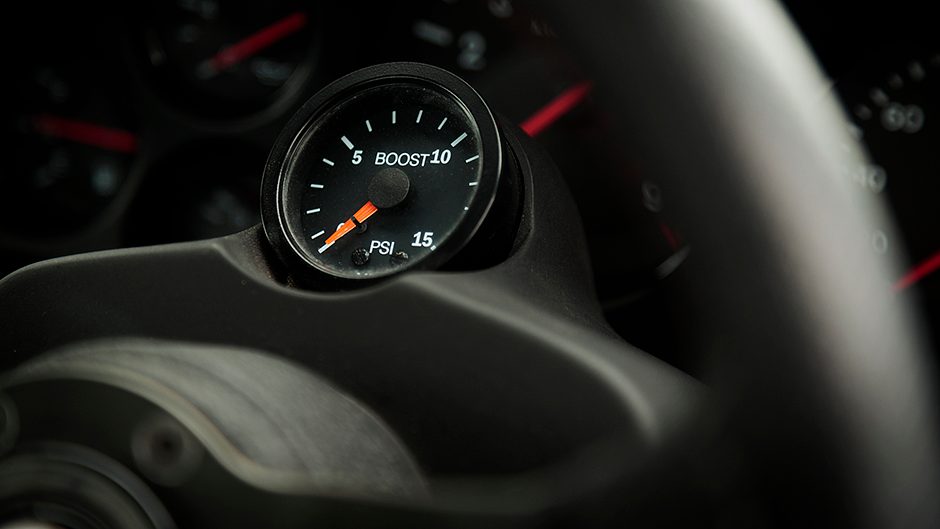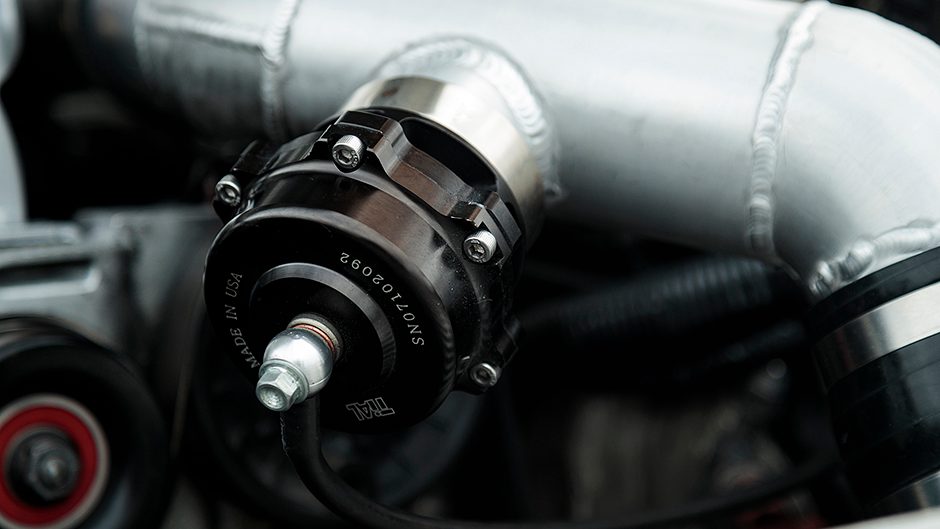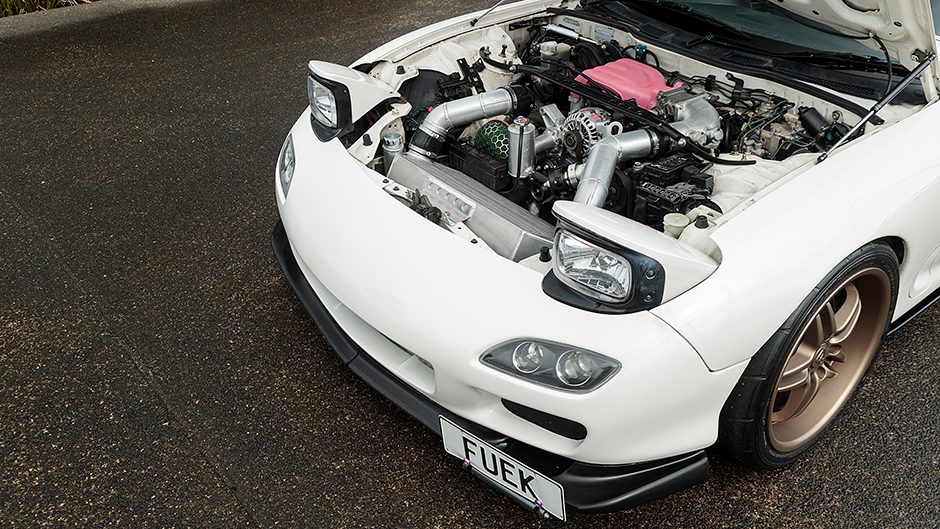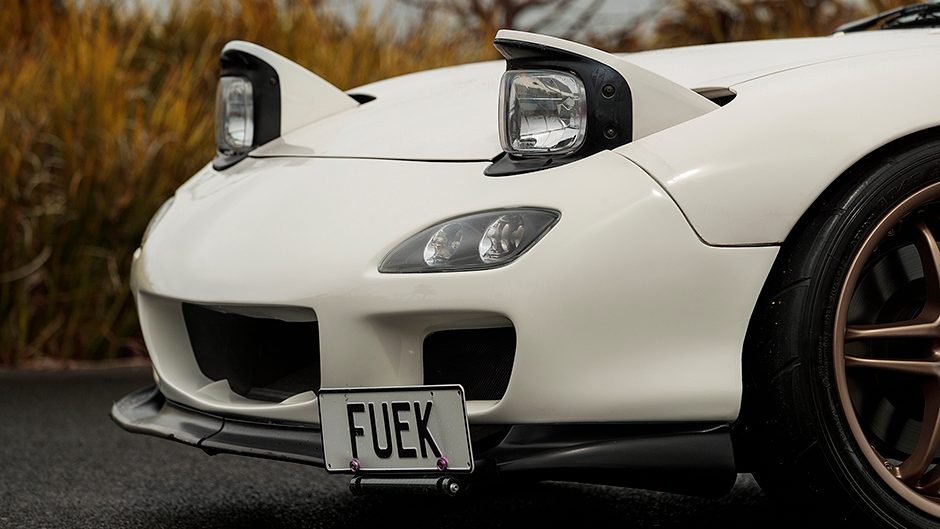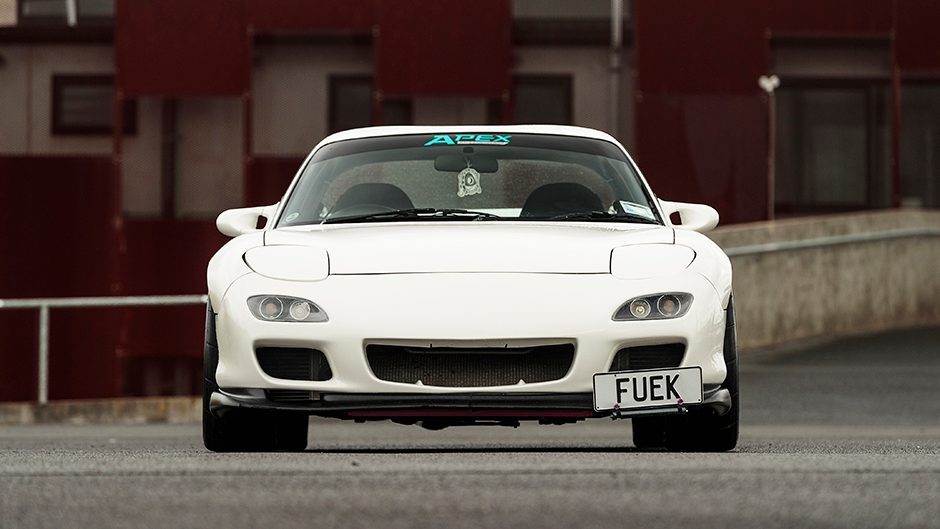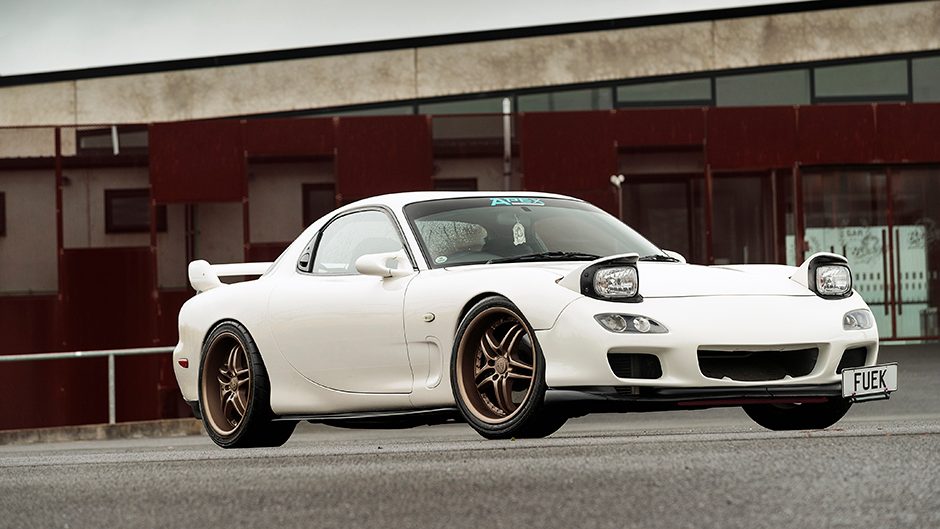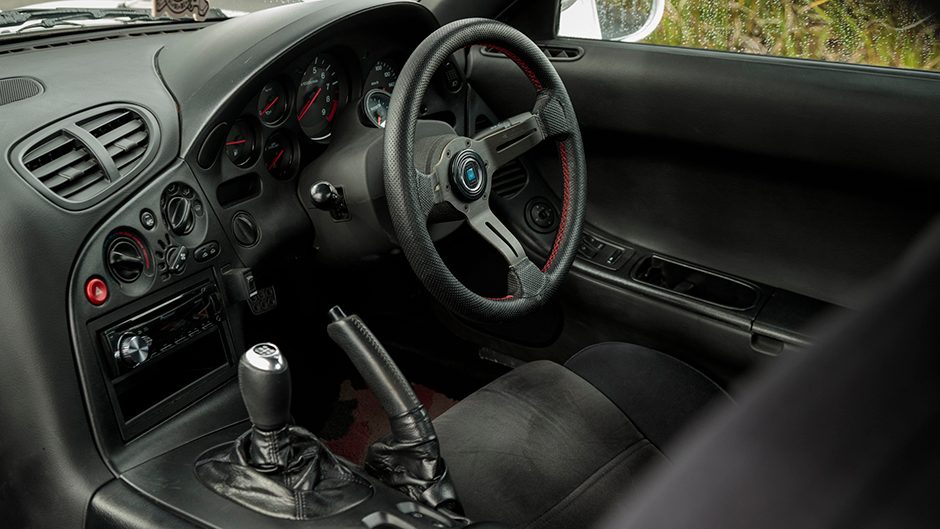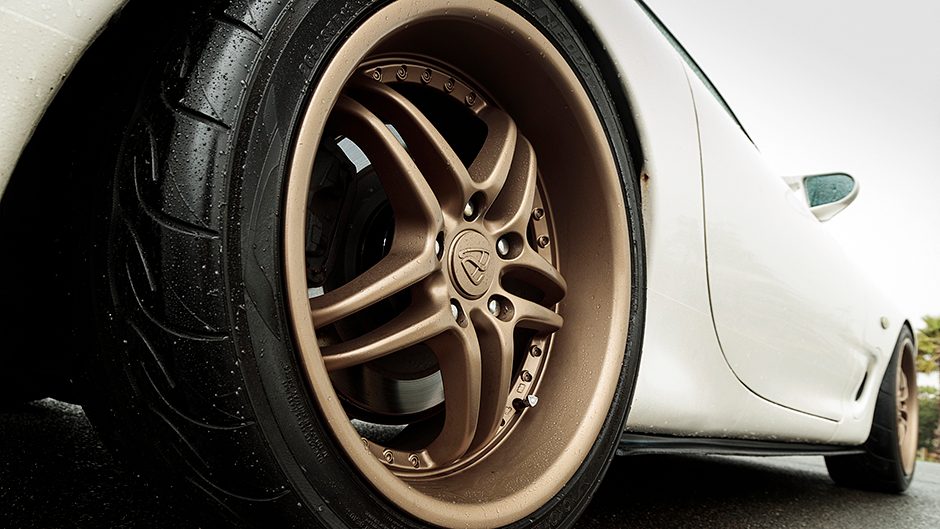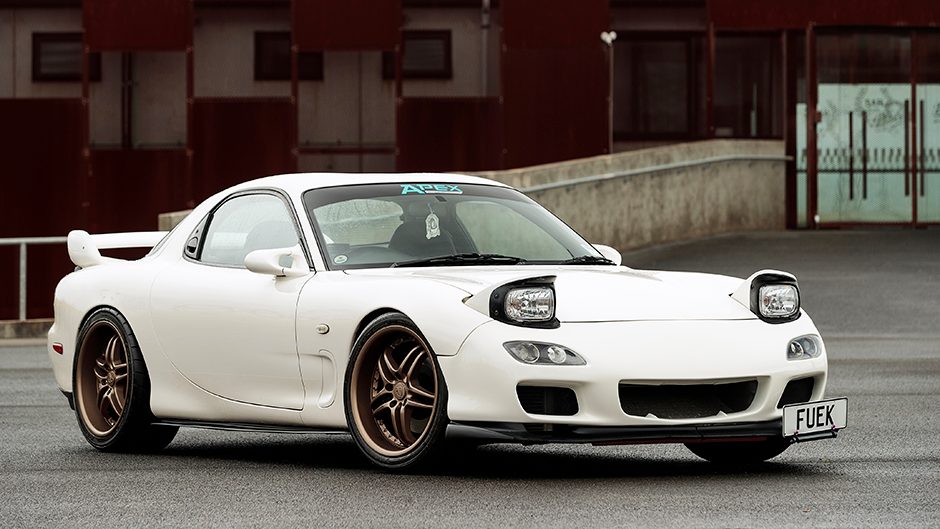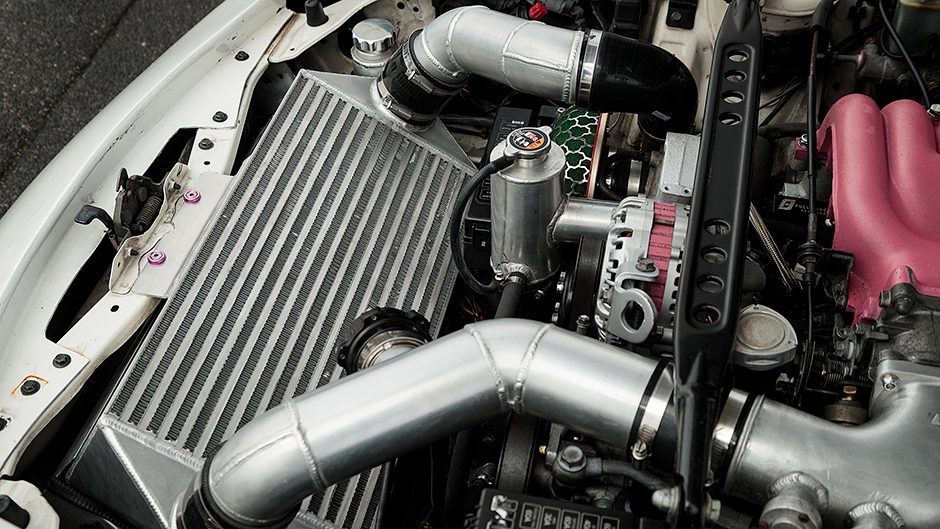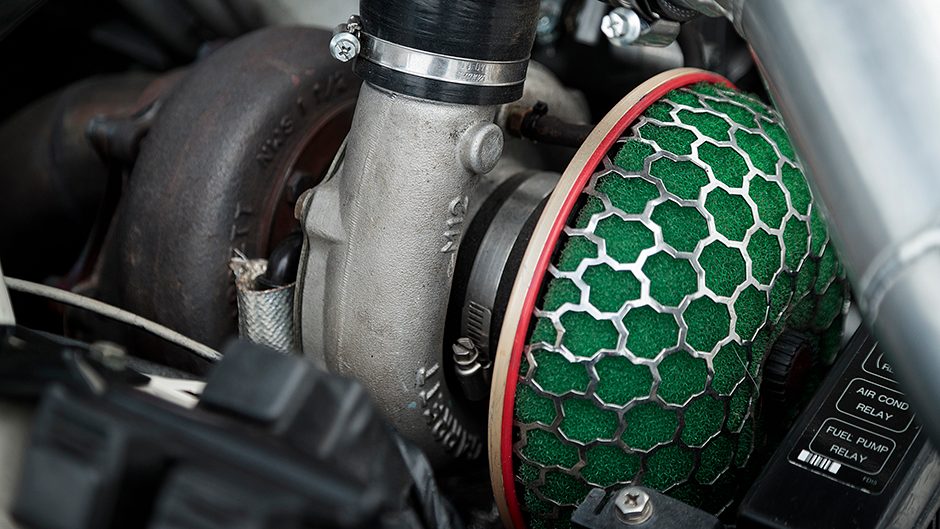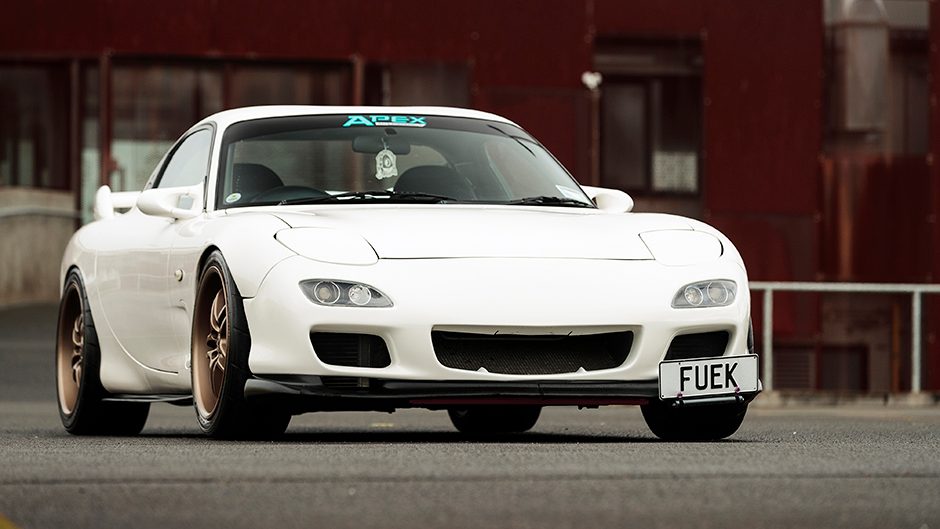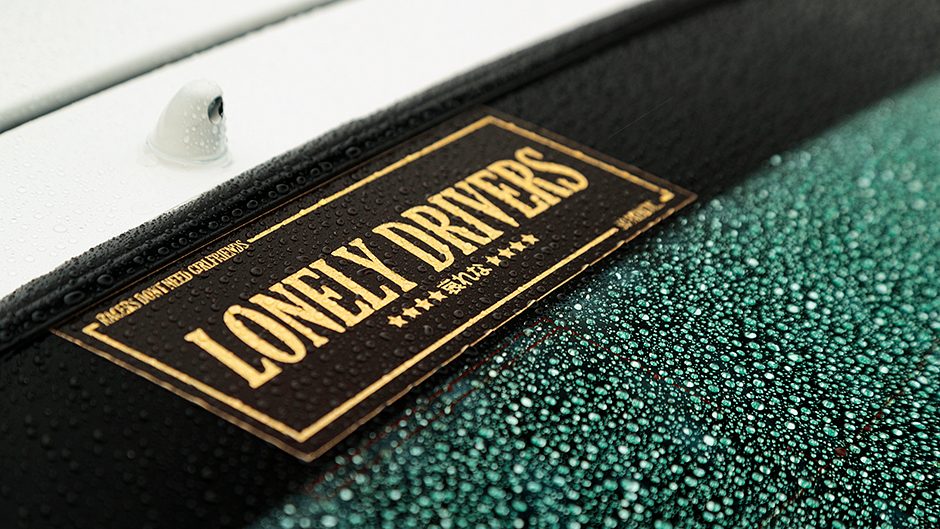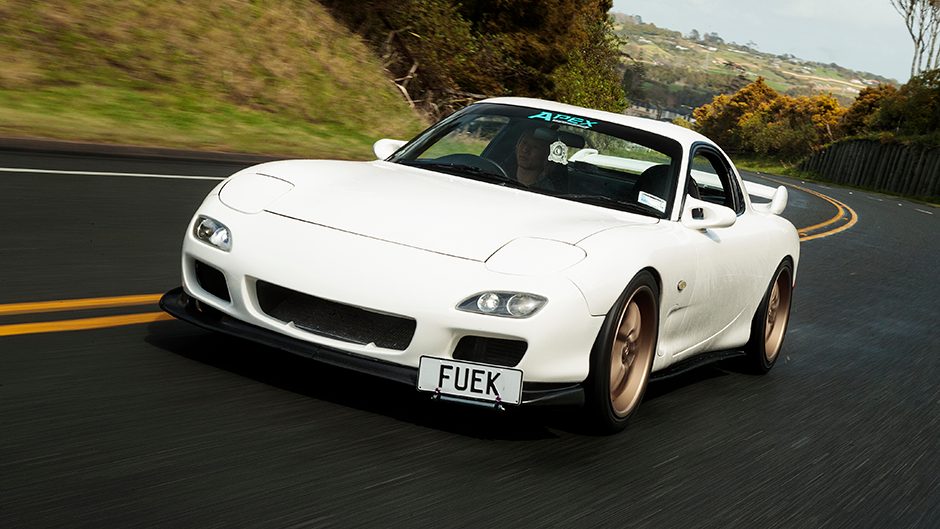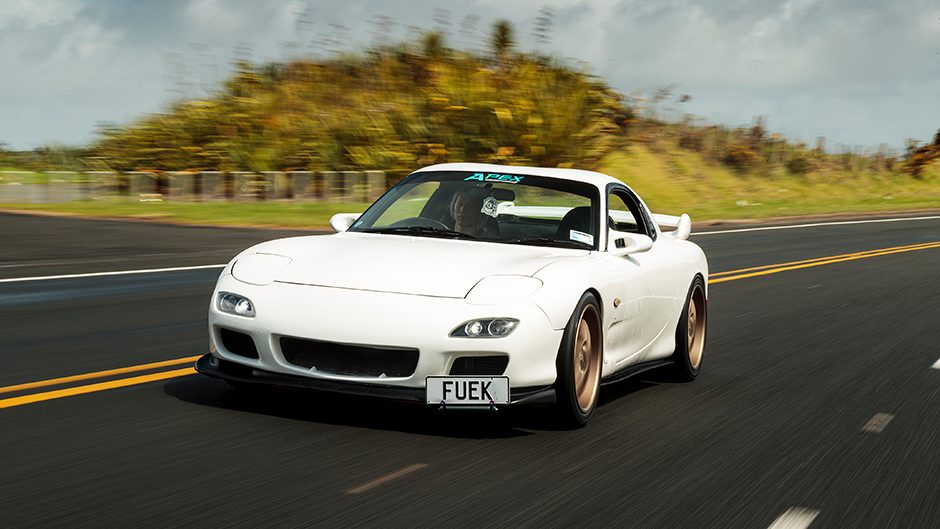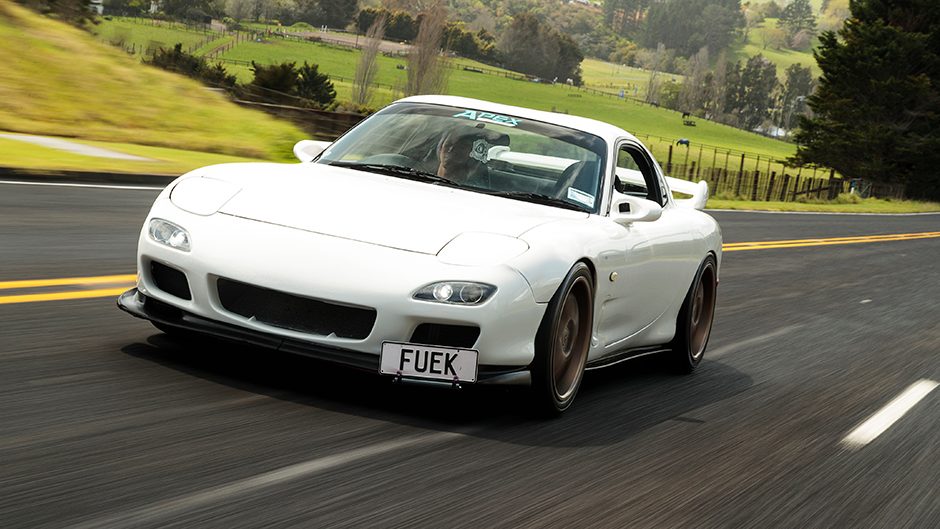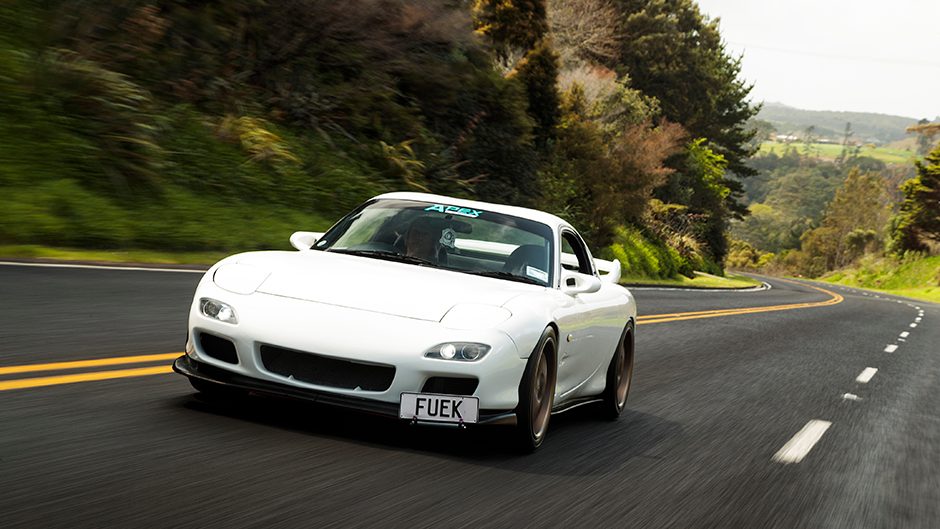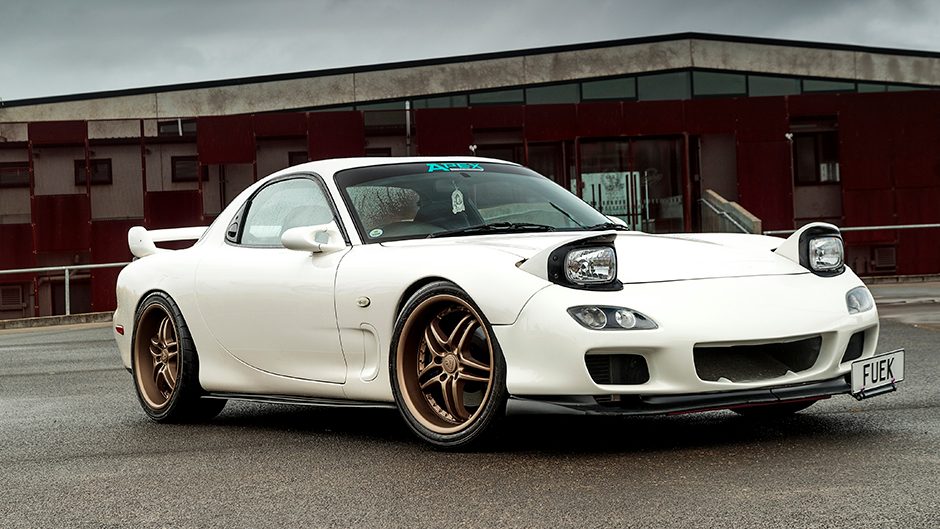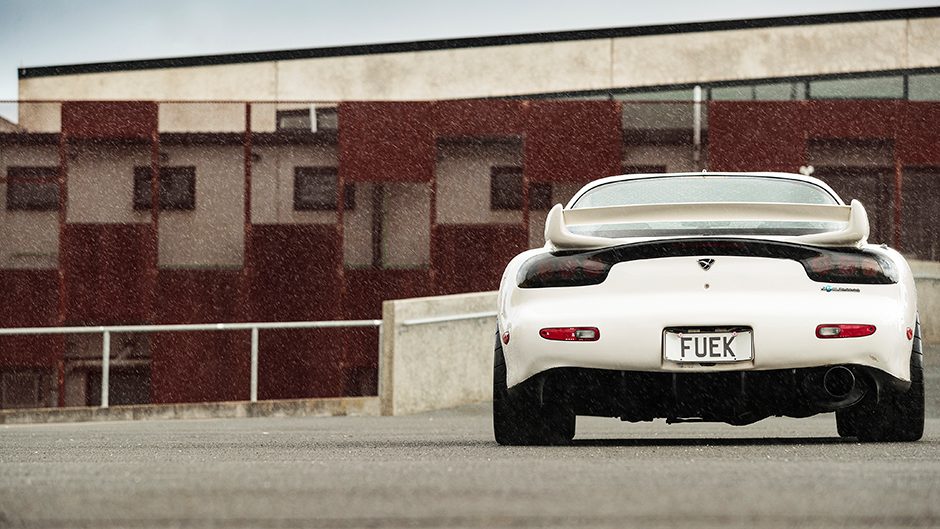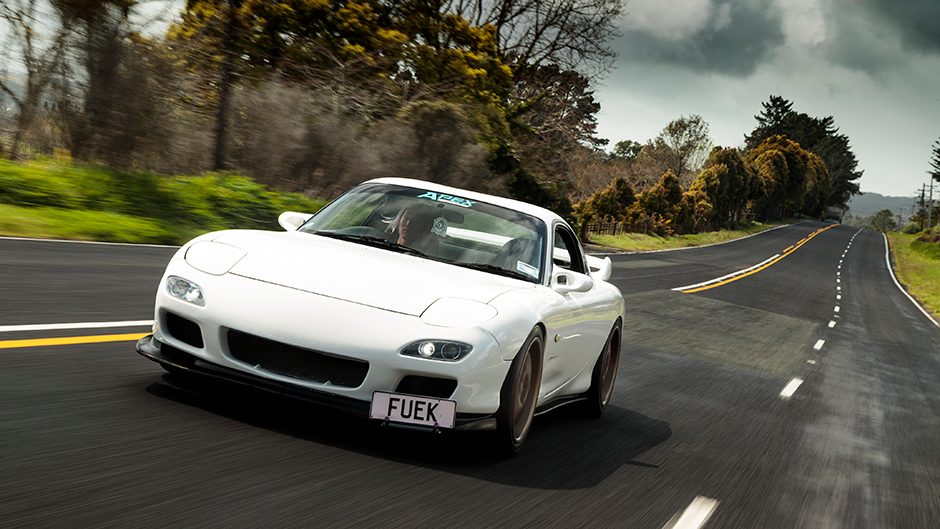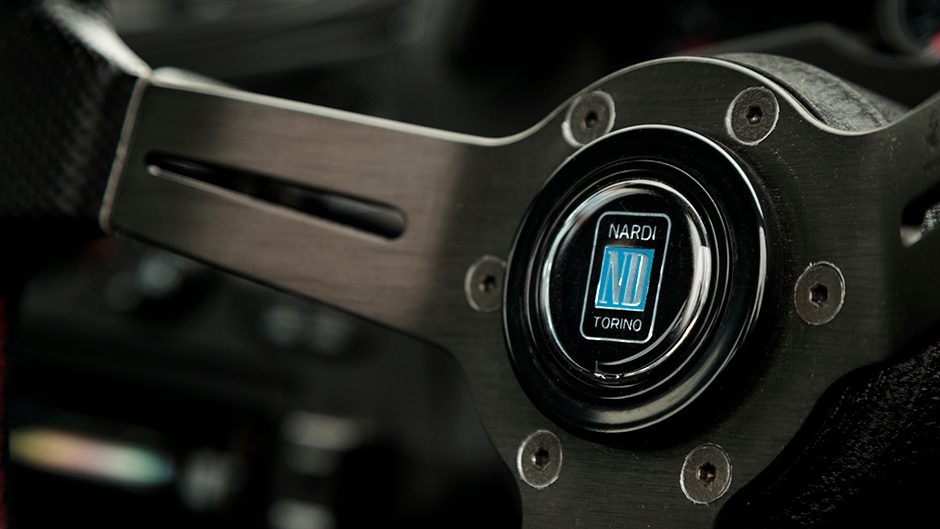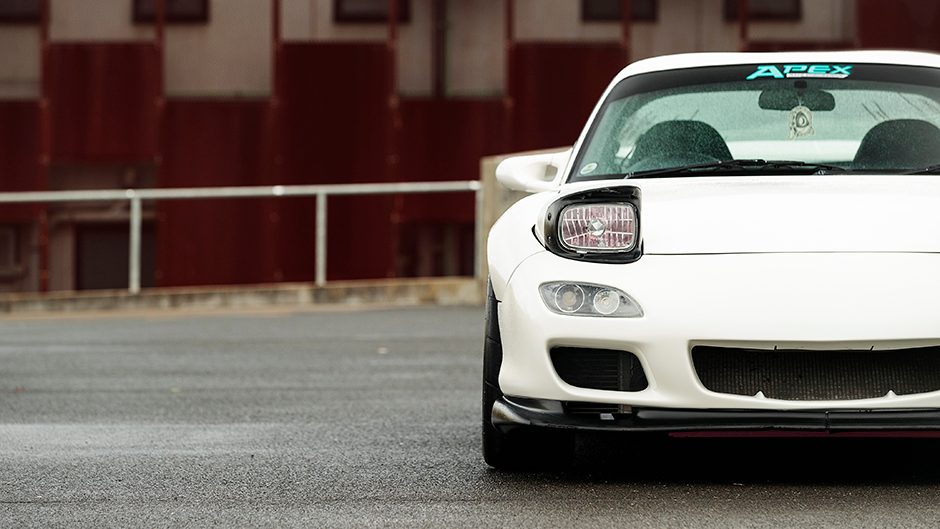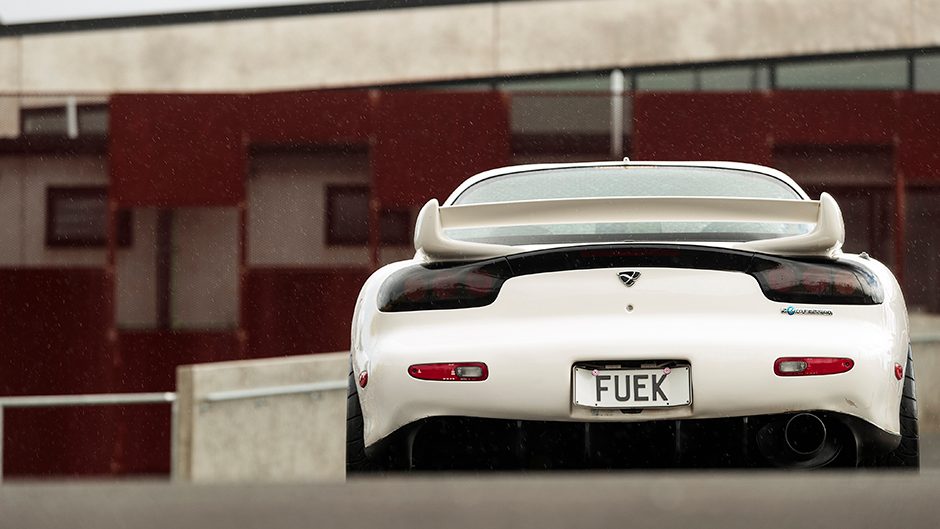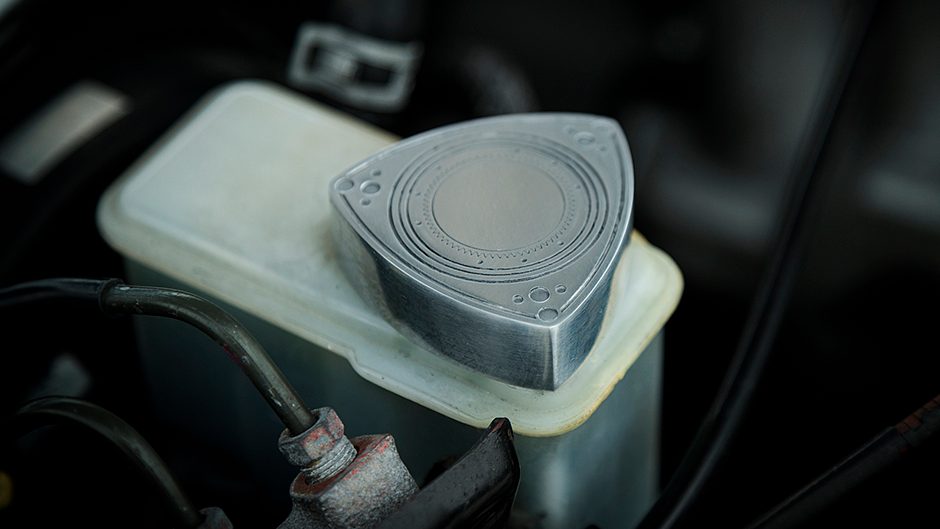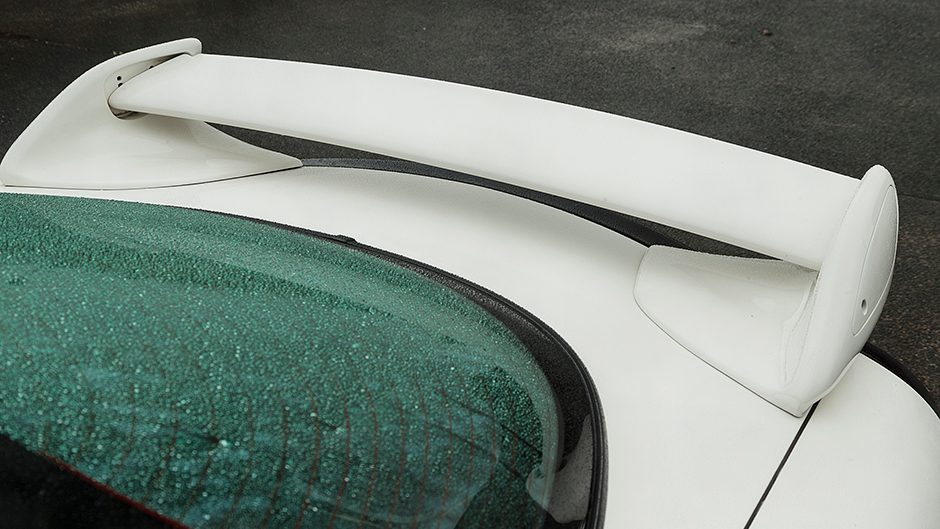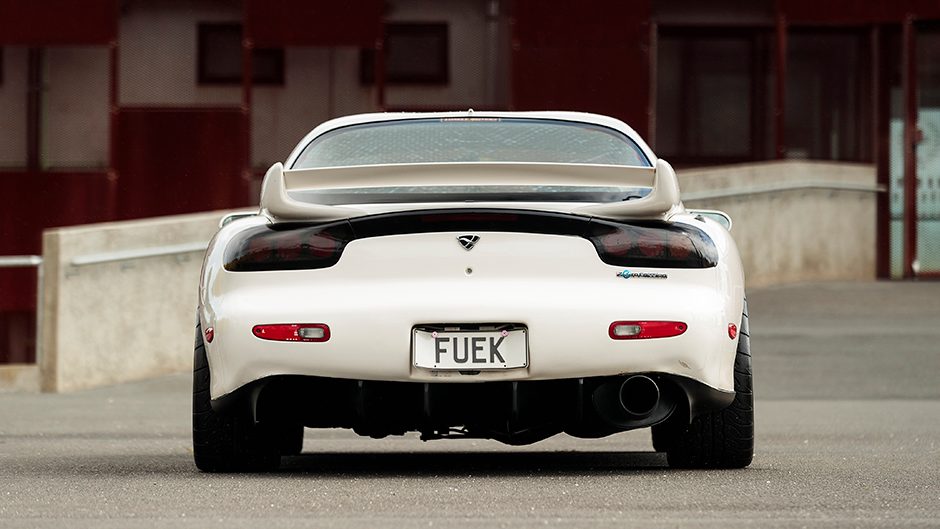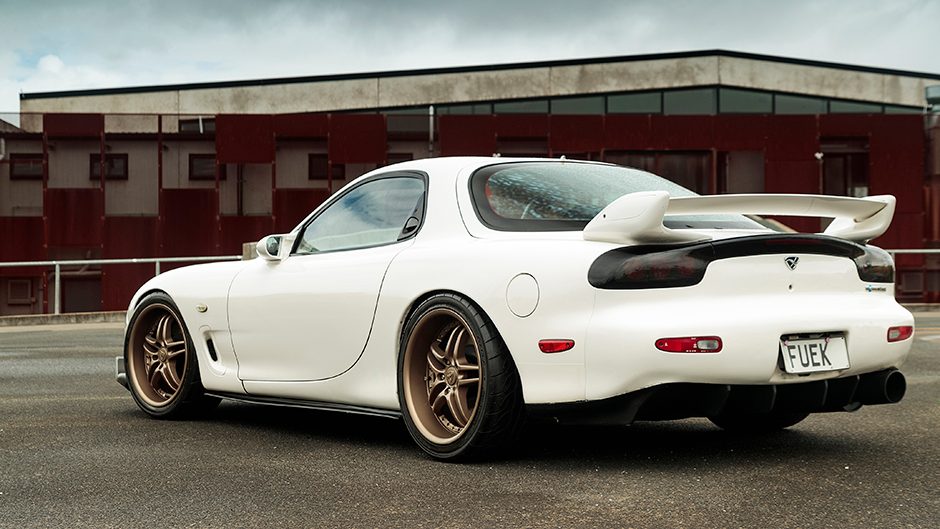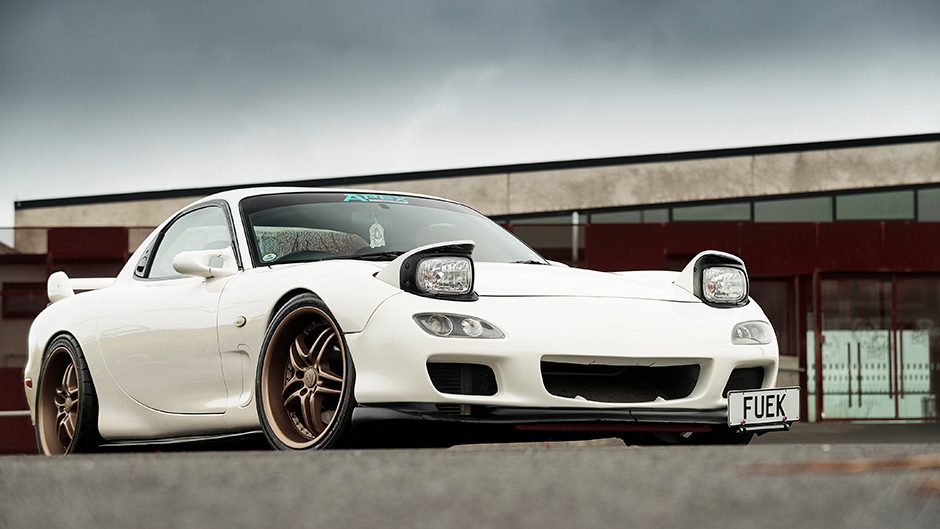1996 Mazda RX-7
The rotary, when running sweetly, produces an intoxicating mix of revolutions, smoothness, power and noise. Its minimal mass also makes the RX-7 a sweet handler. Herein we detail an FD with a few mods.
Despite Mazda being a smaller player than the likes of Toyota or Honda, it has always been willing to do things a bit differently. In the 1960s, it began a major engineering effort on the Wankel rotary engine as a way to set itself apart from the other Japanese manufacturers, eventually finding a home in the RX line. The RX-2, RX-3 and RX-4 all found degrees of success across the world but the RX-7 sports car really put the fire-breathing rotary on the map.
The third generation, chassis-code FD, is often regarded as one of the prettiest shapes to come out of Japan in the 90s, as well as being the first production car to use sequential twin-turbocharging. As you may have noticed, that’s exactly what we have here. A lovely example of a 1996 FD RX-7, with a few subtle mods.
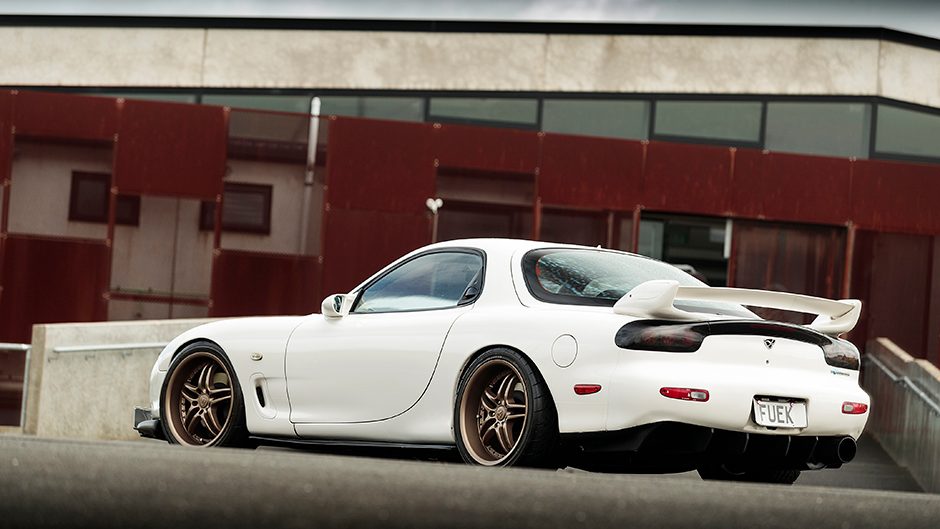
Owned by Eric Peng, this FD has a bridgeported engine with a doweled block, lightened rotors and a balanced rotating assembly, all done after the original engine blew up on the dyno. Doweling is a modification process for strengthening the engine block, making it more rigid and able to handle extra power. Meanwhile, balancing the rotating assembly isn’t strictly necessary in a rotary rebuild but it is crucial for long-term reliability if you’re hunting more power.
Peng took the opportunity to ditch the complex twin turbos for a big single set-up, with a Garrett GT3582R pushing 9psi of boost. He plans to push power to at least 300kW. Further mechanical changes include a custom manifold, a downpipe paired with a Tial 60mm external wastegate, a custom Garrett ‘v-mount’ intercooler, a Tial 50mm blow-off valve, a Link G4 Plus ECU, a full-function primary and secondary fuel rail kit and a Deastchwerks fuel pump with ID1000 injectors. No corners have been cut in the engine department.
As to visual changes, the only mods are a fresh set of wheels and lowered suspension. Eric says his love affair with FDs and the rotary engine began when he was seven years old, watching one rumble down the road. The unique exhaust note, particularly the whub-whub-whub idle and the smell of premix and high-octane fuel captured him and set him on his course.
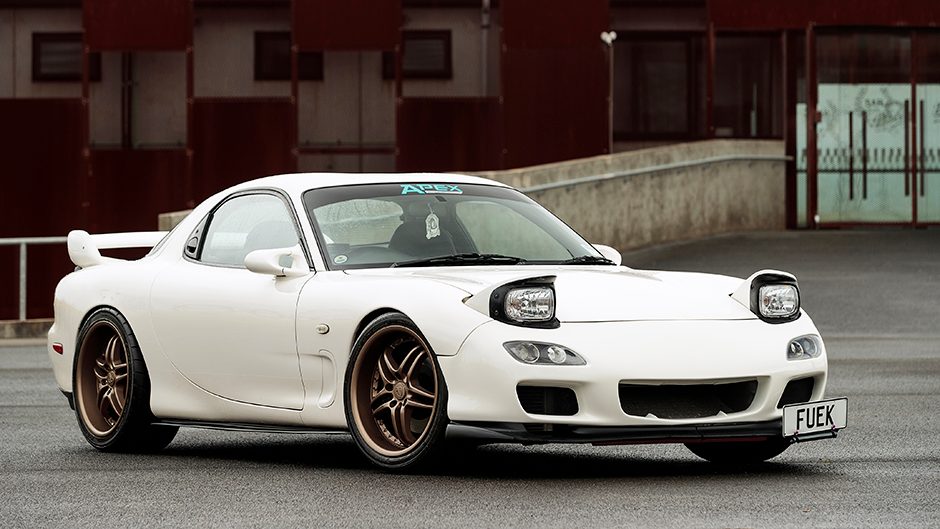
After bouncing around a few different jobs, it might come as little surprise that Eric landed at South Auckland Mazda, working on engines. Despite missing the opportunity to work on showroom-fresh RX-7s at this point, the know-how gained from seasoned Mazda mechanics paid dividends as he worked on his own rotaries at home. Access to wholesale pricing for parts no doubt helped as well.
It says a lot that, twenty-three years after it was built, the RX-7 can still twist necks. Following Eric to the top-secret shoot spot there were more than a few people tracing the 7’s path. Even parked up, enduring on-off Auckland drizzle, the car still looks great, particularly with the pop-up headlights ablaze.
Inside, the layout is similar to that of the Supra we featured last month, with the controls encircling the driver, and a tacho front and centre. Eric has installed an aftermarket boost gauge on the steering wheel column which, combined with the smaller wheel, means the main gauges are somewhat hard to see. The door handles are a bit strange too, the interior latches resembling an enlarged electric window switch while the exterior handle is disguised up on the B pillar.
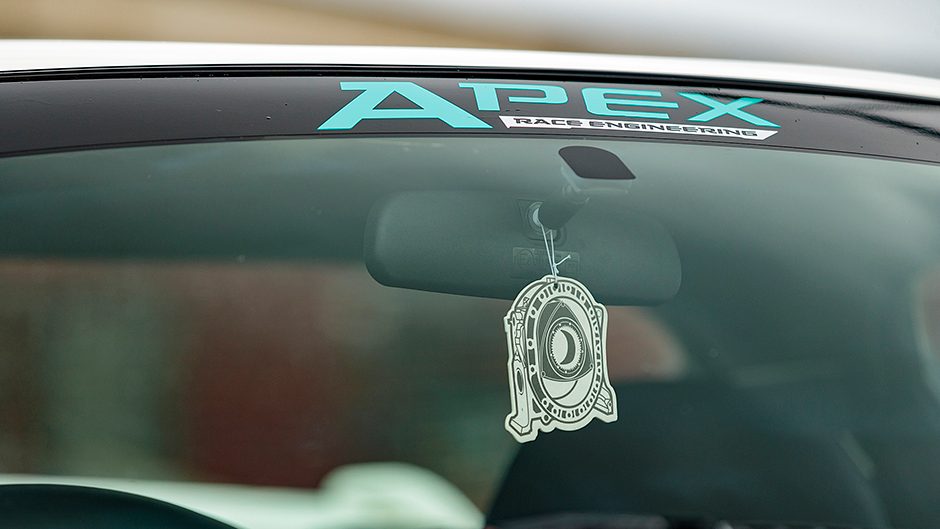
Eric’s car sounds quite restrained compared with some of the fire-spitting 7s you might find on YouTube, going without the typical pulsing idle. He tells me that sound is achieved by more extreme bridgeporting, similar to giving a V8 a higher lift and duration cam profile. However, this pushes the powerband further north in the rev range, making the car a tougher drive at lower revs and increasing the idle rate. Eric wanted a more streetable car over a track weapon, resulting in the tamer idle and more useable powerband. While the idle note may be atypical of a worked rotary, opening the throttle produces an extremely satisfying wail along with the characteristic rush of turbocharged air.
Eric let me take control for a brief blast and it’s immediately apparent this car is more than the sum of its parts. It certainly feels quick, with the engine responsive and happy to rip past 7000rpm. This is helped by a lower overall weight than stock, heavier and more direct steering and lighter wheels. Pair all that with beautifully refined suspension and this 7 is one brilliant corner carver. It would be quite interesting to see how Eric’s car compares to a bone-stock RX-7.
He has a set of Yokohama AD08R tyres fitted which work a treat on the back roads. The extra grip will certainly be helpful when he turns the power up past that 300kW barrier. The turn-in here is telepathic and the sensation of pressing the throttle into the carpet in second, watching the nose of the car lift, then pushing the clutch in to change up and hearing the chirp of the turbo never gets old. It’s even well behaved in traffic, with Eric’s improved cooling working nicely to dissipate excess heat.
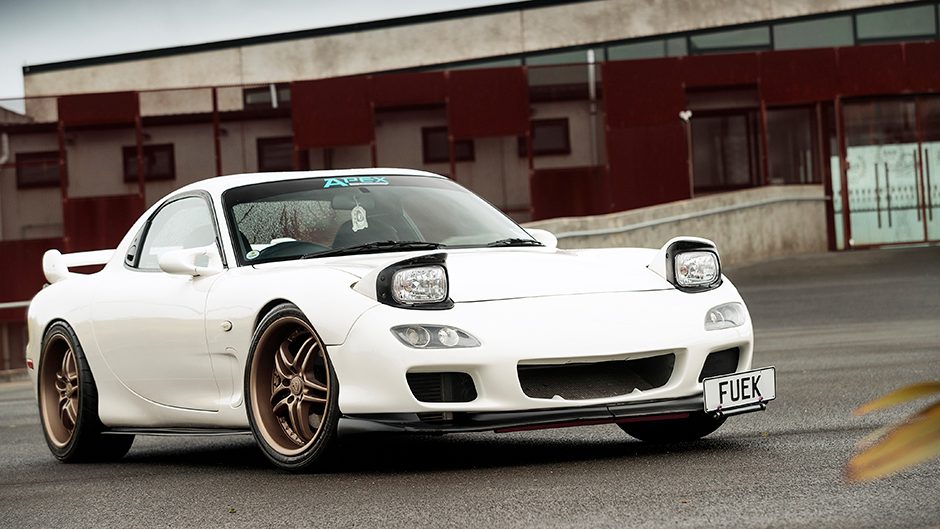
There are squeaks and rattles, sure, the air-con doesn’t work and the suspension is probably a bit firm for the daily drive, but stretch past the city limits and you simply won’t care. You might care about the running costs however, with Eric saying that owning an RX-7 is a battle against fuel/oil consumption and the inevitable engine rebuild. In fact, Eric keeps some premix in the storage pocket behind the passenger seat as he has removed the standard oil metering system to more precisely lubricate the combustion chamber, apex seals and rotor housings.
Prices for the RX-7 haven’t changed too much in the past few years, with nice examples sitting between $20k and $30k. However, prospective owners should be careful where they put their dollars. Eric spent the better part of a year sifting through listings before settling on his one and despite his meticulous search, his engine gave up soon after he took ownership.
But if you have the coin to keep up with the ongoing costs, the FD RX-7 provides one of the best sports car experiences for cars of this vintage.


